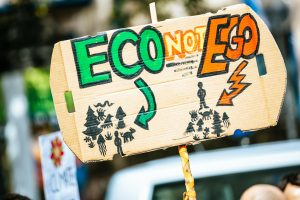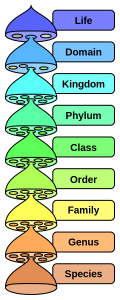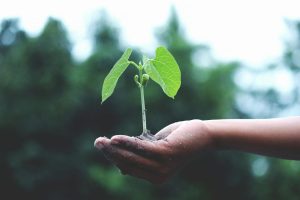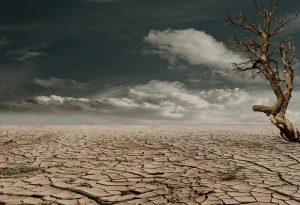The science that preserves life: biodiversity conservation

Everyone knows that our planet is populated by millions of different organisms, which include animals, plants, bacteria and fungi. They interact and share different habitats by creating variability within species and between species. This variability is known as biodiversity.
The International Union for Conservation of Nature (IUCN) Red List says that currently more than 44,000 species are threatened with extinction, which is the 28% of all assessed species. And this number is destined to increase in the future if protection practices are not put in place to safeguard our wildlife.
Nowadays, it’s crucial to preserve and protect our planet by conserving all these species.
When was biodiversity conservation born?
Around the middle of the nineteenth century, a movement developed in the US whose objective was to raise public awareness of the importance of nature for purposes other than economic gain. From here came the need to preserve natural areas by creating protected lands and reserves. During the twentieth century, Aldo Leopold introduced a new ethical vision of nature. In his theory, nature was an integrated and balanced system of biotic and abiotic components.
Modern biology conservation developed in the 1960s with the mission of reducing the negative effects of human actions on the environment. For this reason, conservation biology is naturally interdisciplinary, placing itself between the natural sciences and the social sciences.

Some useful scientific terms

In order to talk about it and understand better how conservation science works, there are some important terms that you should know.
Species– a group of organisms that can reproduce and create fertile offspring. All species have a two-part name; the first part refers to the genus to which the species belongs and the second part is known as the specific name. For example, the scientific name of the wolf is Canis lupus, where Canis is the genus and lupus is the specific name.
Ecosystem– is a community composed of interacting living organisms and their physical environment; all these interactions allow a constant energy flow. An ecosystem could be, for example, a forest or a lake.
Habitat– the environment and all the physical characteristics where a specific species lives, which include the presence of enough space, food, water and shelter. An ecosystem is composed of many different habitats where different species can live.
Population-a group of individuals of the same species that live in the same place and interact with each other.
Ecology– the science that studies the interactions between organisms and their environment. We could also say that it is the study of ecosystems.

Why is it important to preserve biodiversity?
Having biodiversity within an ecosystem is crucial to its proper functioning, in fact every organism has its own role and helps maintain the right balance. Every change will have an impact on the environment and other organisms. For example, a greater diversity of species ensures the natural sustainability of all life forms; a healthy ecosystem better tolerates a disturbance, disease or bad weather and reacts better.
Biodiversity, in addition to its own value, is also important because it is a source of goods, resources and services for humans: the so-called ecosystem services.
Talking about wildlife, each species has an important role in the ecosystem, especially in the food chain, in fact even the loss of just one species could cause serious problems for the entire chain and create imbalances in the ecosystem. In an ecosystem some species have such a big role that they are called “keystone species”, it means that they are needed in order to keep the system healthy and functional. For example, a predator, such as the wolf, helps maintain the prey number under control, which will allow the plants to grow and create a perfect environment for many other species.
Another example is the beaver, which, thanks to the changes made to the environment,
creates new habitats for other animals and plants.
This is why it’s important to think at the ecosystem as a complex and delicate mechanism.

Why is there a loss of biodiversity?
Our planet is constantly changing and that is totally normal but sometimes it could lead to negative results. The main factor in the loss of animal and plant biodiversity is the destruction, degradation and fragmentation of habitats, caused both by natural disasters (for example fires, volcanic eruptions, tsunamis, floods, etc.) and above all by profound changes in the territory due to human activity (for example deforestation, crops, urbanisation, etc.). Other important factors are climate change, pollution, the introduction of alien species and excessive fishing and hunting.
There are many organizations that work for biodiversity conservation and that we could support. WWF is one of the biggest and most well-known charities, started more than 60 years ago; it protects endangered species through different projects around the world. Sea shepard, established in 1977, works to protect the oceans and the marine wildlife. It also offers different volunteer programs. While in the UK, for example, we can find Rewildling Britain, which works for the restoration of the environment and supports rewilding projects around the country.
It is essential to learn to limit the damage caused to the environment. Science is important but let’s always remember that we, in our own small way, can also implement behaviours in favour of the environment and biodiversity. For example, we might try to save water, avoid plastic when possible and limit our emissions by cycling or walking.
Sources:
https://www.iucnredlist.org
https://unacademy.com/content/cbse-class-11/study-material/geography/wildlife-conservation-and-its-importance/
https://www.treccani.it/enciclopedia/biologia-della-conservazione_(Enciclopedia-della-Scienza-e-della-Tecnica)/
https://www.isprambiente.gov.it/it/attivita/biodiversita/le-domande-piu-frequenti-sulla-biodiversita/perche-e-importante-la-biodiversita
https://www.isprambiente.gov.it/it/attivita/biodiversita/le-domande-piu-frequenti-sulla-biodiversita/cosa-puoi-fare-ciascuno-per-proteggere-la-biodiversita
https://www.biopills.net/specie-chiave-di-volta/

Responses